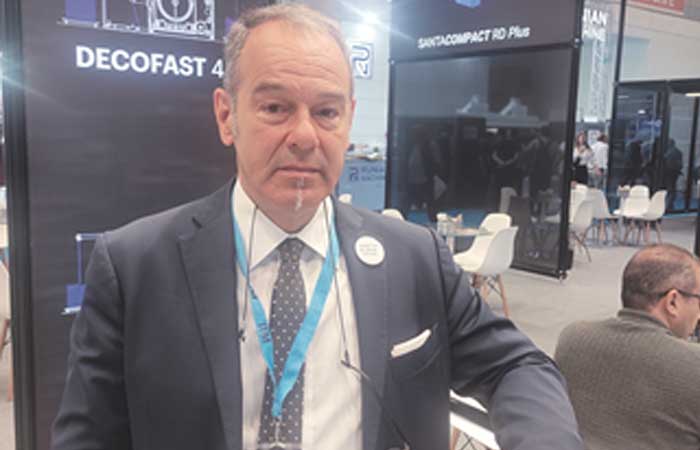
Manufactures must invest in qualified staff and the latest production machinery
Santex Rimar Group S.r.l. is one of the leading players in the world market of textile machinery manufacturers for weaving, textile finishing, technical textiles, and green technologies for water treatment and drying processes. Federico Businaro, Vice-President, Santex Rimar, in this conversation with Divya Shetty, explains why Italy is a leader in textiles and how his company is working to strengthen the relationship between the two countries.
Italy is renowned for its advanced technology and engineering. What would you say are the key strengths of the Italian textile machinery industry that set it apart from other countries?
Italian textile machinery manufacturers offer sophisticated technologies. Combining this key strength with creativity results in innovative machinery that is characteristic for Italy. Meeting customer needs regarding sustainability, versatility, flexibility, quality and price ratio made the Italian machinery an undisputed leader in the world.(Source: ACIMIT website)
Could you share some of the latest innovations Santex Rimar has made in textile machinery?
Compas, the open-width compacting and finishing machine for knitted and woven fabrics developed at Sperotto Rimar is a good example of Italian innovation. The unique compacting concept based on a belt with specific elasticity characteristics allows for most environmentally-friendly and controlled shrinkage. Compas’ revolutionary compacting technology brings unmatched results without adding chemicals.
Sustainability is becoming increasingly important in the textile industry. How does Santex Rimar address environmental concerns through its machinery and processes?
We understand our role as machine manufacturer and as the enabler to transform our industry into a better world. We use our profound understanding of processes and our technical knowhow for economical and respectful handling of resources such as water and energy. For example, we follow two energy-saving strategies in machine development for fabric finishing. The first aims at technology which skips one or more production steps, to shorten the finishing process. Equally important is the use of innovative components such as motors, electrical and electronic controls, which can significantly reduce energy consumption.
The relationship between Italy and India in the textile sector has been growing. Can you elaborate on how Santex Rimar is engaging with the Indian market and any collaborative projects or partnerships you are involved in?
Speaking for Santex Rimar Group, we maintain strong relations with Indian market players. Our subsidiary in India, Santex Engineering India located in Coimbatore, Tamil Nadu, is the base for customer care for the subcontinent. Knowledgeable staff in sales and service are at hand in the office, in the workshop and in the field. I’m proud to share that they are about to install a new Santacompact RD Plus in Northern India. With Santacompact RD Plus, our esteemed customer decided on excellent fabric characteristics after shrinking as well as a significantly faster production speed.
What are the major challenges currently facing the textile machinery industry, and how is Santex Rimar overcoming these challenges?
The news report about the geopolitical and economic challenges and other crisis. Uncertainty is ultimately the biggest challenge and a great constraint for investments and progress. We honestly don’t have the means to overcome complex global challenges, but our brands still stand for long traditions and strong values that offer trust and support to our customers and the textile industry.
How does Santex Rimar ensure high standards of quality and precision in your machinery, and what measures are in place to maintain this reputation?
Machine manufacturers must invest in qualified staff and the latest production machinery. The brands of Santex Rimar Group also invest a significant amount in research and development to be one step ahead and set new standards of quality and precision. That forms part of the reputation – and customer feedback does the rest.
Could you discuss any upcoming trends or technological advancements in textile machinery that you believe will shape the future of the industry?
The possibilities of digitization and IoT will be further exploited. In future, AI will be integrated into sophisticated systems. What it means in detail, it’s in the heads of engineers… I believe that machinery becomes more clever and helps overcome the lack of skilled workforce and use resources in a smart way.



